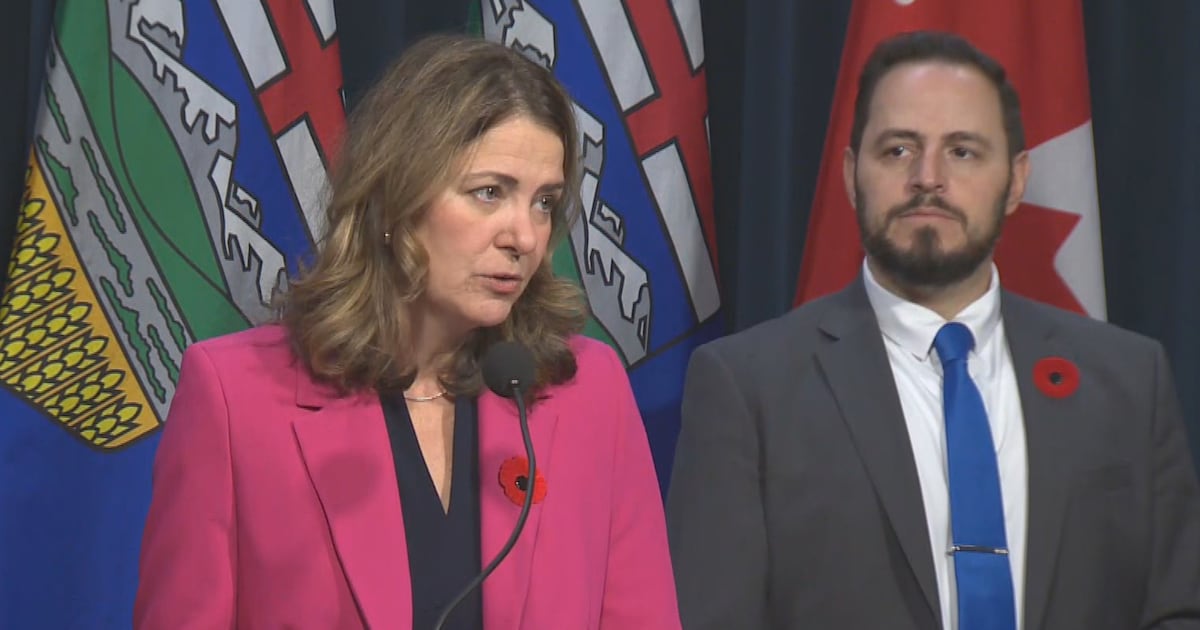Education
Alberta Premier Launches Committee to Tackle Classroom Challenges

Alberta Premier Danielle Smith announced on March 16, 2024, the formation of the Class Size and Complexity Cabinet Committee, aimed at addressing the pressing issues of overcrowded classrooms and the complexities inherent in Alberta’s education system. This initiative follows months of negotiations between the province and the Alberta Teachers’ Association (ATA) regarding these persistent challenges.
During a press briefing in Calgary, Smith, alongside Education Minister Demetrios Nicolaides, emphasized the necessity of a coordinated approach to tackle the diverse needs of students. “These issues create challenges for teachers, educational assistants, as well as students, and we want to work with you to deal with them head-on,” Smith stated. The committee’s formation comes shortly after the government passed Bill 2, which mandated teachers to return to work amid ongoing disputes.
Committee Composition and Objectives
The newly established committee will comprise eleven members, including Smith and Nicolaides. Notably, this iteration includes representatives from various educational sectors, a change from the previous 25-member panel that lacked input from the ATA. Smith acknowledged the importance of including teachers in discussions, stating, “We need to take a holistic approach,” to address the challenges effectively.
The committee aims to facilitate cross-ministry collaboration, bringing together various stakeholders such as the ministers of Children’s Services, Assisted Living and Social Services, and Mental Health and Addiction. Smith explained, “Some students may have files with children’s services or require lifelong support, and that’s why we need these ministers at the table.”
Nicolaides added that the committee will actively seek input from teachers and other stakeholder groups to incorporate their insights and experiences into the decision-making process. “We want to invite different perspectives,” he noted, acknowledging the need for collaboration in addressing classroom complexities.
Addressing Classroom Sizes and Resource Allocation
During her radio program, “Your Province, Your Premier,” Smith discussed the current classroom dynamics in Alberta. With approximately 51,000 teachers and 750,000 students, she remarked that the average class size should ideally be around 13 to 14 students per teacher. However, she pointed out discrepancies caused by teachers not actively teaching, raising questions about the need to convert substitute teachers into full-time positions.
The premier also highlighted the uneven distribution of educational assistants across school districts. “Some districts have a high number of education assistants, while others have very few. This disparity affects our ability to provide necessary support for students with additional learning needs,” she stated. By identifying classrooms with the greatest complexity and allocating resources accordingly, Smith believes the committee can enhance the learning environment for both students and educators.
Smith acknowledged the distinct circumstances faced by different school districts, particularly in Calgary, Edmonton, and Red Deer. She emphasized that understanding these variances is crucial for effective negotiations and solutions. “The complexity of the classroom environment makes it challenging to commit to a specific pupil-teacher ratio,” she explained.
In light of recent controversies surrounding Bill 2, Smith defended the government’s decision to use the notwithstanding clause to enforce the return of teachers to work. The ATA has announced its intention to legally challenge this bill, with President Jason Schilling stating, “We’re standing up for the Charter itself, for the rule of law, and for the limits that protect citizens from arbitrary government decisions.”
The establishment of the Class Size and Complexity Cabinet Committee represents a significant step towards addressing long-standing issues within Alberta’s education system. By fostering collaboration among various ministries and including educators in the conversation, the government aims to create a more effective and supportive learning environment for students across the province.
-

 Science3 months ago
Science3 months agoToyoake City Proposes Daily Two-Hour Smartphone Use Limit
-

 Top Stories3 months ago
Top Stories3 months agoPedestrian Fatally Injured in Esquimalt Collision on August 14
-

 Health3 months ago
Health3 months agoB.C. Review Reveals Urgent Need for Rare-Disease Drug Reforms
-

 Technology3 months ago
Technology3 months agoDark Adventure Game “Bye Sweet Carole” Set for October Release
-

 World3 months ago
World3 months agoJimmy Lai’s Defense Challenges Charges Under National Security Law
-

 Lifestyle3 months ago
Lifestyle3 months agoVictoria’s Pop-Up Shop Shines Light on B.C.’s Wolf Cull
-

 Technology3 months ago
Technology3 months agoKonami Revives Iconic Metal Gear Solid Delta Ahead of Release
-

 Technology3 months ago
Technology3 months agoApple Expands Self-Service Repair Program to Canada
-

 Technology3 months ago
Technology3 months agoSnapmaker U1 Color 3D Printer Redefines Speed and Sustainability
-

 Technology3 months ago
Technology3 months agoAION Folding Knife: Redefining EDC Design with Premium Materials
-

 Technology3 months ago
Technology3 months agoSolve Today’s Wordle Challenge: Hints and Answer for August 19
-

 Business3 months ago
Business3 months agoGordon Murray Automotive Unveils S1 LM and Le Mans GTR at Monterey








